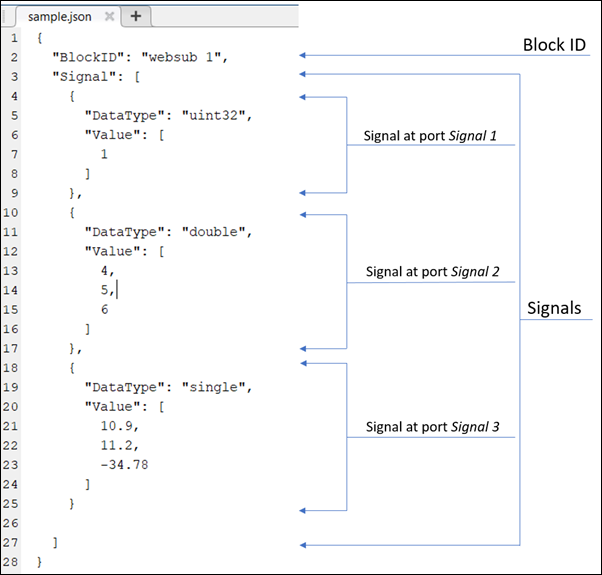WebSocket Subscribe
Subscribe to the JSON data received by a WebSocket server
Add-On Required: This feature requires the Simulink Support Package for Raspberry Pi Hardware add-on.
Libraries:
Simulink Support Package for Raspberry Pi Hardware /
Network
Description
The WebSocket Subscribe block subscribes to the data received by a WebSocket server identified by an IP address and a port. The received data must be in JavaScript Object Notation (JSON) format, which can be interpreted by a WebSocket client to manipulate the data.
WebSocket JSON Data
This figure shows the signals in JSON format with a unique block label.

Ports
Output
Parameters
Version History
Introduced in R2020a